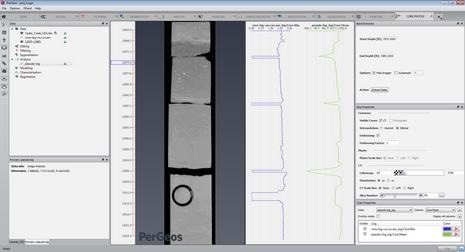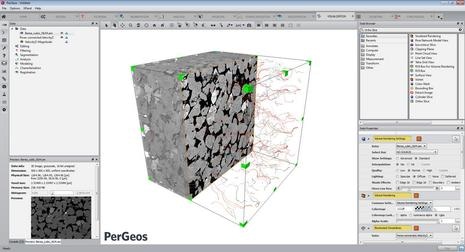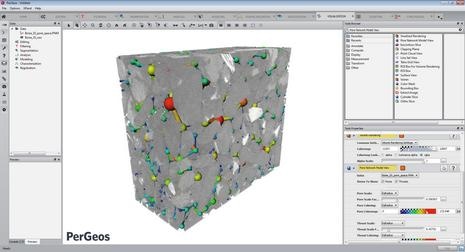TheThermo Scientific™ PerGeos™ softwarepackage offers an adaptable modular architecture that is designed to allow new capabilities to be rapidly deployed as soon as they are developed. Because of this inbuilt flexibility, PerGeos™ provides the user with an adaptive environment, perfectly suited for a range of daily interactions with core samples.
As well as the automated image processing workflows that come as standard with the package, PerGeos™ is fully compatible with a suite of additional applications; each one providing a different user experience according to their specific needs. Each of these additional modules is designed to assist users in making specific statistical observations about the sample they are working with before transferring that knowledge (via a digital environment) to the entire asset team for interactive QC.
由于Pergeos™软件的模块化体系结构,可以选择以下其他应用程序。
核心配置文件应用程序
The Core Profile Application has been developed for the correlated viewing of depth-matched with whole-core CT data, petrophysical logs and whole-core photos within a single piece of software.

The module also includes an automated core assembler than can automatically align, stack and stitch whole-core data into a single, complete image. Users are also able to segment then extract a virtual log from the dataset, allowing them to compare this to conventional petrophysical logs.
Petrophysics Application
The Petrophysics Application gives the user access to image-based models that allow the simulation of the sample’s flow, electrical and thermal properties. This includes electrical resistivity, absolute permeability, capillary pressure and formation factor among others.

Geologists are able to use this information to correlate specific depositional structures and environments with associated physical behavior. This is a key aspect of reservoir quality.
Pore Statistics Application
The Pore Statistics Application is able to extract a pore network model from a segmented 3D dataset. This includes pore and pore throat sizes - both important elements for flow modeling. By extracting this data, users are better equipped to predict the performance of production approaches for a given reservoir rock type.

Additionally, this module includes specific tools to quantify 2-phase and 3-phase fluids that can be seen in microCT imaging. When engineers can link rock characteristics with physical processes, they are given a physical basis in which to design the completions and EOR/IOR components needed for a field’s development evolution.